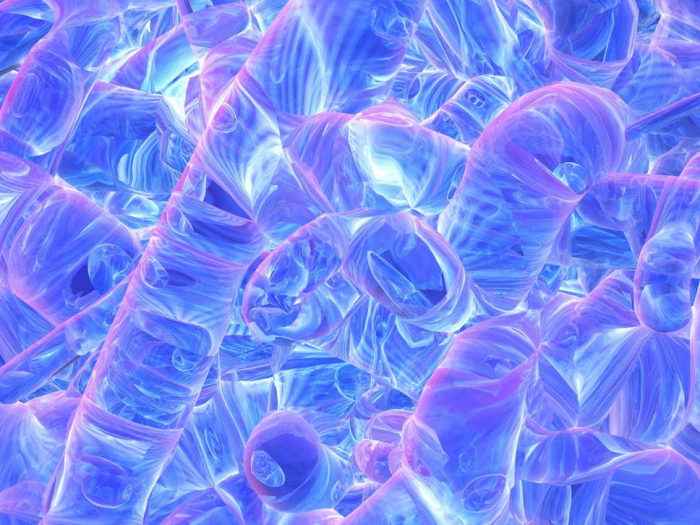One of those buildings housed The New York Times. As night fell, reporters at The Times gloried in the steady illumination thrown off by Thomas Edison’s electric lamps. “The light was soft, mellow, and grateful to the eye, and it seemed almost like writing by daylight,” they reported in an article the next day.
But nature invented the electrical grid first, it turns out. Even in 1882, thousands of miles of wires were already installed in the ground in the New York region – in meadows, in salt marshes, in muddy river bottoms. They were built by microbes, which used them to shuttle electricity.
Electroactive bacteria were unknown to science until a couple of decades ago. But now that scientists know what to look for, they’re finding this natural electricity across much of the world, even on the ocean floor. It alters entire ecosystems, and may help control the chemistry of the Earth.
“Not to sound too crazy, but we have an electric planet,” says John Stolz, a microbiologist at Duquesne University in Pittsburgh. In the mid-1980s, Stolz was helping to study a baffling microbe fished out of the Potomac River by his colleague Derek Lovley. The microbe, Geobacter metallireducens, had a bizarre metabolism. “It took me six months to figure out how to grow it in the lab,” says Lovley, now a microbiologist at the University of Massachusetts at Amherst.
Like us, Geobacter feed on carbon compounds. As our cells break down these compounds to generate energy, they strip off free electrons and transfer them to oxygen atoms, producing water molecules. Geobacter couldn’t use oxygen, however, because it lived at the bottom of the Potomac, where the element was in short supply.
Instead, Geobacter transfers its electrons to iron oxide, or rust, Lovley and his colleagues discovered. The process helps turn rust into another iron compound, called magnetite. The finding left the scientists with a puzzle. We humans draw oxygen into our cells to use it, but Geobacter does not import rust. So the microbe must somehow get the electrons out of its cell body and attach them to rust particles. How?
A real live wire
The researchers struggled for years to find the answer. Stolz eventually turned to other microbes to study. But Lovley soldiered on. Over the years, he and his colleagues have come across Geobacter in many places far beyond the Potomac. They’ve even encountered the bacteria in oil drilled from deep underground. “It’s basically found everywhere,” Lovley says.
In the early 2000s, Lovley’s team discovered that Geobacter could sense rust in its neighbourhood. The microbe responded by sprouting hairlike growths.
Maybe each of those growths, known as a pilus, was actually a wire that latched onto the rust, Lovley thought. Electrons could flow from the bacterium down the wire to the receptive rust. “It seemed like a wild idea at the time,” Lovley says.
But he and his team found several clues suggesting that the pilus is indeed a living wire. In one experiment, when Geobacter was prevented from making pili, the bacteria couldn’t turn rust to magnetite. In another, Lovley and his colleagues plucked pili from the bacteria and touched them with an electrified probe. The current swiftly shot down the length of the hairs.
Subsequent research revealed that Geobacter can deploy its wires in different ways to make a living. Not only can it plug directly into rust, it can also plug into other species of microbes.
In the early 2000s, a Danish microbiologist named Lars Peter Nielsen discovered a very different way to build a microbial wire. He dug up some mud from the Bay of Aarhus and brought it to his lab. Putting probes in the mud, he observed the chemical reactions carried out by its microbes.
“It developed in a very weird direction,” Nielsen recalls. At the base of the mud, Nielsen observed a buildup of a foul-smelling gas called hydrogen sulfide. That alone was not surprising – microbes in oxygen-free depths can produce huge amounts of hydrogen sulfide. Normally, the gas rises to the surface, where oxygen-breathing bacteria can break most of it down.
Electroactive microbes may help regulate the chemistry of both the oceans and the atmosphere
But the hydrogen sulfide in the Aarhus mud never made it to the surface. About an inch below the top of the mud, it disappeared; something was destroying it along the way.
After weeks of perplexity, Nielsen woke up one night with an idea. If the bacteria at the bottom of the mud broke hydrogen sulfide without oxygen, they would build up extra electrons. This reaction could only take place if they could get rid of the electrons. Maybe they were delivering them to bacteria at the surface.
“I imagined it could be electric wires, and I could explain all of this,” he says. So Nielsen and his colleagues looked for wires, and they found them. But the wires in the Aarhus mud were unlike anything previously discovered.
Each wire runs vertically up through the mud, measuring up to two inches in length. And each one is made up of thousands of cells stacked on top of each other like a tower of coins. The cells build a protein sleeve around themselves that conducts electricity.
As the bacteria at the bottom break down hydrogen sulfide, they release electrons, which flow upward along the “cable bacteria” to the surface. There, other bacteria – the same kind as on the bottom, but employing a different metabolic reaction – use the electrons to combine oxygen and hydrogen and make water.
Cable bacteria are not unique to Aarhus, it turns out. Nielsen and other researchers have found them – at least six species so far – in many places around the world, including tidal pools, mud flats, fjords, salt marshes, mangroves and sea grass beds.
And cable bacteria grow to astonishing densities. One square inch of sediment may contain as much as eight miles of cables. Nielsen eventually learned to spot cable bacteria with the naked eye. Their wires look like spider silk reflecting the sun.
Living wires would be easier on the environment than the man-made kind
Electroactive microbes are so abundant, in fact, that researchers now suspect that they have a profound impact on the planet. The bioelectric currents may convert minerals from one form to another, for instance, fostering the growth of a diversity of other species. Some researchers have speculated that electroactive microbes may help regulate the chemistry of both the oceans and the atmosphere.
“To me, it’s a strong reminder of how ready we are to ignore things we cannot imagine,” Nielsen says.
Electroactive bacteria for hire
Much about these microbes remains murky, and subject to debate. In April, Nikhil S Malvankar, a physicist at Yale University, and his colleagues challenged Lovley’s finding that Geobacter use pili as wires.
Their research indicates that bacteria use a different structure to pump electrons. It’s a wire built from building blocks called cytochromes. Individual cytochromes are important for moving electrons around inside cells. But until now no one knew they could be stacked into a conductive wire.
“There never had been a material like this before,” Malvankar says.
At Cornell University, Buz Barstow and his colleagues are investigating the possibility of wiring bacteria to solar panels. The panels would capture sunlight and generate a stream of electrons. The electrons would stream down microbial wires to a species of bacteria called Shewanella, which would use the energy to convert sugar into fuel.
It’s still a distant dream. For now, Barstow is trying to work out the basic biology by which Shewanella moves electrons from its wires to the molecules it uses for its metabolism. But he is so taken with the elegance of electroactive bacteria that he figures it’s worth a shot. “You’re talking to someone who has drunk the Kool-Aid,” he says.
Other researchers are looking into using these filaments as sensors. For instance, a wristband with embedded wires might monitor people’s health by delivering electric current when it detects chemical changes in sweat. Lovley and his colleagues are genetically engineering Geobacter to add molecular hooks to their pili so they snag certain molecules.
Among the many advantages that living wires may have is that they would be easier on the environment than the man-made kind. “It takes a lot of energy and nasty chemicals to make a lot of those electronic materials, and then none of them are biodegradable,” Lovley says.
Bacteria, by contrast, can build wires from little more than sugar. And when it comes time to throw wires away, they become food for other microbes.
Nielsen, who now directs the Centre for Electromicrobiology at the University of Aarhus in Denmark, says he is avoiding the technology rush for now. There is still too much to learn about the microbes themselves. “Once we find out what these wires are made from and how they work,” he says, “a lot of potential applications may show up.”
The Independent
More about: brain
















































